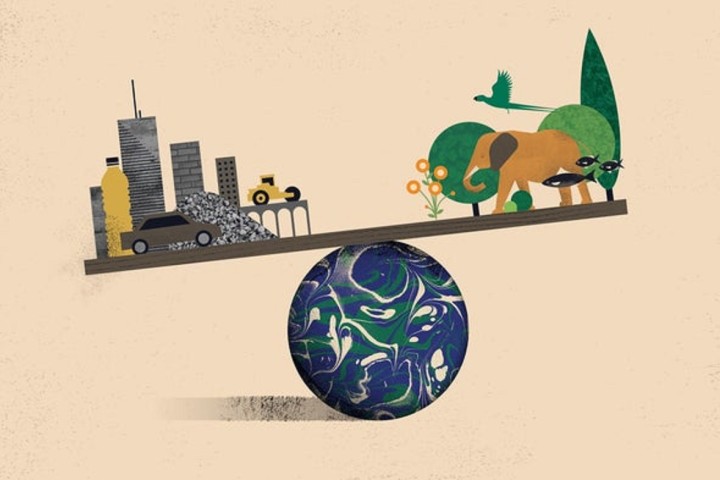Human-Made Stuff Now Outweighs All Life on Earth

Humanity has reached a new milestone in its dominance of the planet: human-made objects may now outweigh all of the living beings on Earth.
Roads, houses, shopping malls, fishing vessels, printer paper, coffee mugs, smartphones and all the other infrastructure of daily life now weigh in at approximately 1.1 trillion metric tons—equal to the combined dry weight of all plants, animals, fungi, bacteria, archaea and protists on the planet. The creation of this human-made mass has rapidly accelerated over the past 120 years: Artificial objects have gone from just 3 percent of the world’s biomass in 1900 to on par with it today. And the amount of new stuff being produced every week is equivalent to the average body weight of all 7.7 billion people.
The implications of these findings, published on Wednesday in Nature, are staggering. The world’s plastics alone now weigh twice as much as the planet’s marine and terrestrial animals. Buildings and infrastructure outweigh trees and shrubs. “We cannot hide behind the feeling that we’re just a small species, one out of many,” says study co-author Ron Milo, who researches plant and environmental sciences at the Weizmann Institute of Science in Israel. These numbers should be a wake-up call, he adds. They tell us “something about the responsibility that we have, given that we have become a dominant force,” Milo says.
He and his team had previously published an estimate of the amount of biomass on Earth, which led to the question of how it compared with the mass of artificial objects. Emily Elhacham, then a graduate student at the Weizmann Institute, led the effort to pull together disparate data sets on the flow of materials around the world. The researchers found that human-made, or anthropogenic, mass has doubled every 20 years since 1900. Total biomass remained more stable in that time period, though plant biomass has declined by approximately half since the dawn of agriculture some 12,000 years ago. The team estimates that anthropogenic mass crossed over to exceed biomass this year, plus or minus six years.
The researchers chose to focus only on living biomass and anthropogenic objects that are in use—not waste. With waste, anthropogenic mass began outweighing biomass in 2013, plus or minus five years. And the crossover point is slightly later if water weight is included in the biomass calculations. The wet weight of the biomass on Earth is currently 2.2 trillion metric tons, and humans are on track to outproduce that figure in 2031 (including waste) or 2037 (without it).
About half of the world’s current human-made mass is concrete, with aggregates such as gravel making up much of the rest. Bricks, asphalt, metals, plastic and other materials make up about 19 percent of the total.
The new research actually uses a conservative standard to define both anthropogenic mass and waste, says Colin Waters, a geologist at the University of Leicester in England, who had discussed the research in its early stages with Milo but was not directly involved in the study. Take, for example, a gold wedding band. The study would measure only the few grams of gold in the band as anthropogenic mass. But somewhere between four million and 20 million metric tons of ore were processed to make that tiny piece of metal, Waters says. Similarly, Waters says, the analysis does not take into account billions of tons of Earth moved when mining coal or dredging. Taking a more expansive view of human activities into account, he says, would put the point at which anthropogenic mass outweighed biomass in 1977, according to Waters’ research.
Whatever the moment when humanity’s production eclipsed nature’s, the study points to a larger narrative in which humans are modifying the planet to such an extent that we have created a new geologic epoch called the Anthropocene, says Waters, who has been active in research seeking out geologic markers of this proposed division of time.
The new research also raises alarms for the future. If current trends hold, anthropogenic mass will grow to three times the world’s biomass by 2040, Milo and his colleagues found—and there are plenty of metals and minerals available to keep this trend going in the near term. All of that new anthropogenic mass will eventually become waste that will have to be dealt with, says Fridolin Krausmann, who studies sustainable resource use at the Institute of Social Ecology at the University of Natural Resources and Life Sciences, Vienna, and was a peer reviewer for the paper but was not directly involved in the research. “In the next 20 years, we will get as much waste as from the last 110 years together,” he says. “Most of what we have now has been built in the last couple of decades, since the 1960s. Now this is becoming end-of-life, so we are really facing huge, huge waste flows.”

_0.jpg)